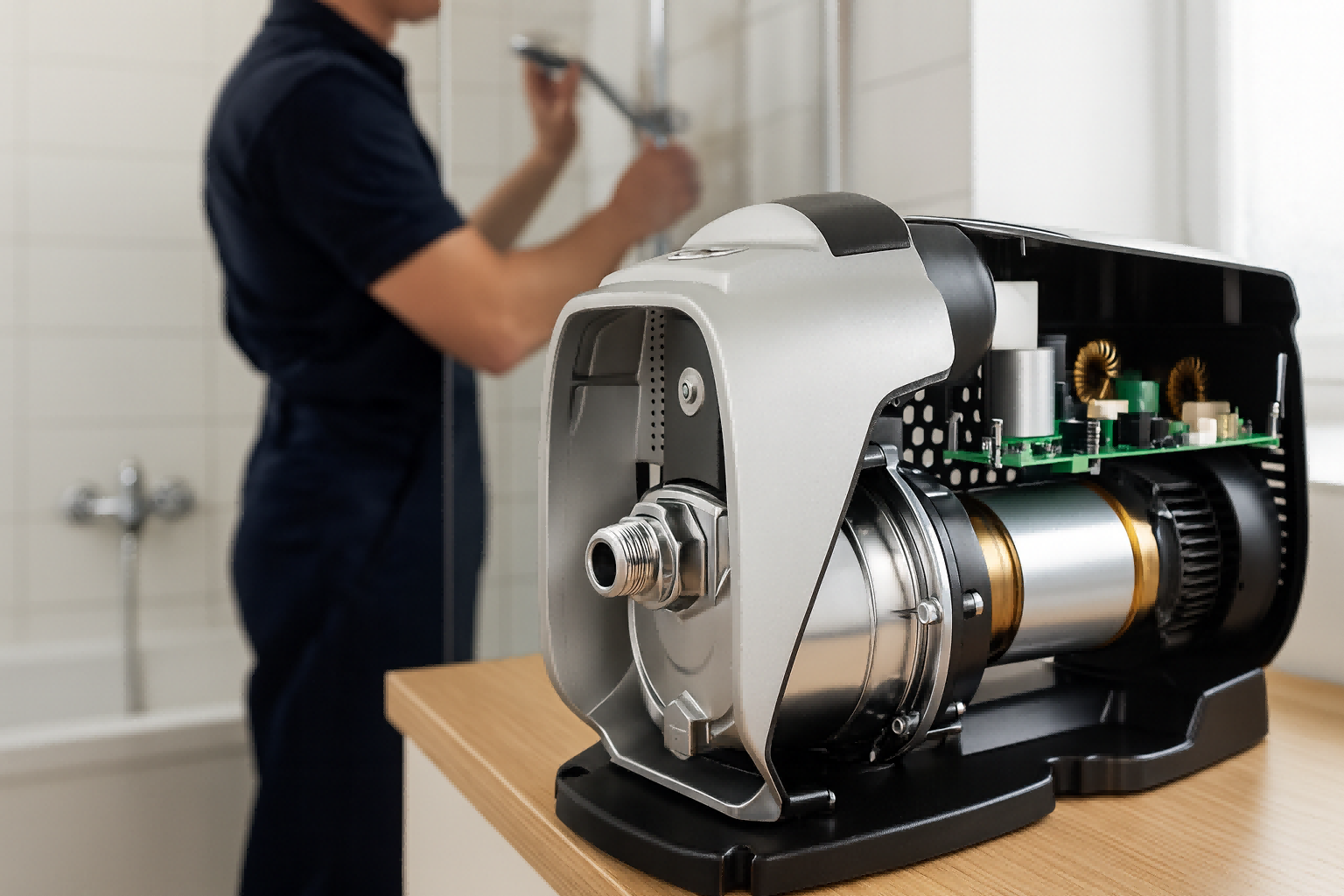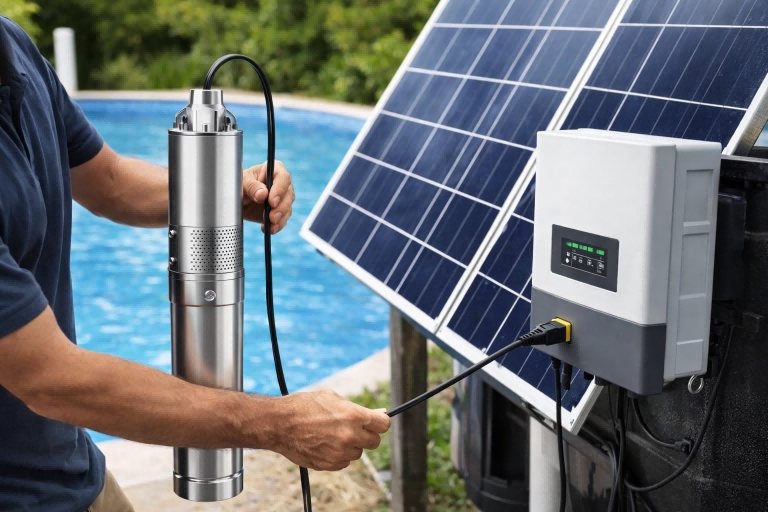Struggling with inefficient fluid transfer?
This common problem can disrupt operations and increase costs.
Centrifugal pumps provide a powerful, reliable, and versatile solution for countless applications.
A centrifugal pump is a machine used to move fluids, like water, by converting rotational kinetic energy to hydrodynamic energy.
They are essential in agriculture for irrigation, in cities for water supply and wastewater management, and in industries for handling everything from chemicals to beverages.

Understanding how these pumps work reveals why they are so widely adopted across the globe.
They are not just a piece of machinery; they are the heart of many systems that support our daily lives and industries.
Let's explore the fundamental principles that make these pumps a cornerstone of modern fluid dynamics and see how they can benefit your operations.
How Do Centrifugal Pumps Actually Work?
Finding a simple explanation for pump mechanics can be difficult.
Complex jargon often confuses the core principles.
Understanding the basics helps you make better purchasing and maintenance decisions.
A centrifugal pump works by using a spinning impeller to draw fluid into the pump and then force it out through the discharge outlet.
The impeller's rotation creates a low-pressure area at its center, pulling fluid in, while centrifugal force pushes the fluid outward at high velocity and pressure.
To truly grasp the process, we need to look closer at the key components and the physics involved.
The entire operation is a beautiful interplay between simple mechanical parts and fundamental fluid dynamics.
This process is what makes the pump so efficient and reliable for moving large volumes of liquid.
Let's break down the step-by-step journey of fluid as it travels through the pump.
The Suction and Inlet
The process begins at the suction inlet, or nozzle.
This is where the fluid first enters the pump casing.
The pump must be primed, meaning the casing is filled with liquid before it starts.
An airtight suction line is critical to prevent air from entering, which can stop the pump from working.
The Role of the Impeller
The impeller is the heart of the pump.
It is a rotor with a series of curved vanes.
When the impeller spins, it imparts rotational energy to the fluid.
The fluid enters the impeller at its center, often called the "eye."
| Impeller Part | Function |
|---|---|
| Eye | The central point where fluid enters. |
| Vanes | Curved blades that grip and accelerate the fluid. |
| Shroud | Plates that enclose the vanes (in closed impellers). |
Creating Centrifugal Force
As the impeller rotates at high speed, it slings the fluid outward.
This is pure centrifugal force in action.
The fluid's velocity increases dramatically as it moves from the eye to the outer edge of the vanes.
This high velocity is a form of kinetic energy.
The Volute Casing
The high-velocity fluid exits the impeller and enters the volute.
The volute is a specially shaped casing that spirals out.
Its cross-sectional area gradually increases toward the discharge outlet.
Converting Velocity to Pressure
The volute's design is clever.
As the area increases, the fluid slows down.
According to Bernoulli's principle, as the fluid's velocity decreases, its pressure must increase.
This conversion of kinetic energy (velocity) into potential energy (pressure) is the pump's main goal.
This high-pressure fluid is then pushed out through the discharge outlet, ready to be moved through a pipe system.
What Are the Main Types of Centrifugal Pumps?
Choosing a pump can be overwhelming.
With so many types, it's hard to know which is right.
Selecting the correct type ensures efficiency and longevity for your specific application.
The main types of centrifugal pumps are categorized by factors like flow direction, number of stages, and physical design.
Key types include radial, mixed, and axial flow pumps, as well as single-stage, multi-stage, submersible, and self-priming pumps, each suited for different pressure and volume needs.
The design of a pump directly impacts its performance characteristics.
Some are built for high pressure, others for high flow rates, and some are designed to handle solids or operate underwater.
Understanding these key distinctions is the first step for any distributor or importer looking to source the right equipment for their market.
Let's dive into the most common classifications you'll encounter.
Classification by Flow Direction
The direction the fluid takes through the impeller is a primary way to classify these pumps.
- Radial Flow Pumps: In these pumps, the fluid is discharged radially, or at a 90-degree angle to the pump shaft. This design is excellent for generating high pressure, making it ideal for boiler feed applications and high-head systems.
- Axial Flow Pumps: Here, the fluid moves parallel to the pump shaft, much like a boat's propeller. Axial pumps are designed for very high flow rates but generate low pressure. They are commonly used in flood dewatering and large-scale water circulation.
- Mixed Flow Pumps: As the name suggests, this is a hybrid. Fluid is discharged at an angle between radial and axial. They offer a good balance, providing moderate pressure and a high flow rate, suitable for various industrial and municipal applications.
Classification by Number of Stages
A "stage" refers to a single impeller and its corresponding volute or diffuser.
- Single-Stage Pumps: These pumps have just one impeller. They are simple, easy to maintain, and very common. They are perfect for applications requiring low to medium head, such as local water boosting and circulation. Most standard household booster pumps are single-stage.
- Multi-Stage Pumps: These pumps have two or more impellers within a single casing. The fluid is discharged from one impeller and immediately enters the eye of the next. Each stage adds more pressure to the fluid. Multi-stage pumps are used for high-pressure applications like high-rise building water supply, reverse osmosis, and large-scale irrigation.
Classification by Physical Design
The physical construction also defines the pump's use case.
- Submersible Pumps: The entire pump assembly, including the motor, is designed to be fully submerged in the fluid it is pumping. This design is common for deep well water extraction, sump drainage, and sewage handling.
- Self-Priming Pumps: These pumps can evacuate air from the suction line on their own. This makes them extremely useful for applications where the pump is located above the fluid source. Our intelligent permanent magnet self-priming pumps are a popular choice for this reason.
Where Are Centrifugal Pumps Used in Daily Life?
People often don't see the machines that run our world.
Their importance is easily overlooked.
Recognizing their role reveals how critical they are to our modern standards of living.
Centrifugal pumps are everywhere in daily life, even if hidden.
They supply clean water to our homes, and remove wastewater.
They are used in car engines for cooling, in agriculture for irrigating crops, and in fire-fighting systems to deliver high-pressure water during emergencies.
From the moment you wake up and turn on the tap to the food you eat, centrifugal pumps play a silent but vital role.
Their versatility allows them to be adapted for an incredible range of tasks, from gentle circulation to powerful, high-pressure delivery.
Let's explore some of these essential applications that you might encounter every day without even realizing it.
Domestic Water Supply
This is the most common application.
When you open a faucet, a pump is likely working somewhere to provide that water pressure.
- Municipal Water Systems: Large-scale pumps move treated water from purification plants through a vast network of pipes to entire cities and neighborhoods.
- Home Booster Pumps: In areas with low municipal pressure or in tall buildings, smaller booster pumps are installed. Our VSD booster pumps are perfect for this. They maintain constant, comfortable water pressure for showers and appliances while saving significant energy.
- Well Water Systems: For homes not connected to a municipal supply, submersible or jet pumps draw water up from a private well.
Agriculture and Irrigation
Farming depends on a reliable water supply.
Centrifugal pumps are the backbone of modern irrigation.
- Crop Irrigation: Large pumps move water from rivers, lakes, or wells to sprinklers or drip irrigation systems, ensuring crops get the water they need to grow.
- Livestock Watering: Pumps supply water to troughs and drinking systems for farm animals.
- Drainage: In low-lying areas, pumps are used to remove excess water from fields to prevent crop damage.
Commercial and Industrial Uses
Almost every industry relies on pumps.
| Industry | Common Use of Centrifugal Pumps |
|---|---|
| Manufacturing | Transferring chemicals, cooling machinery, process water. |
| Food & Beverage | Moving liquids like milk, juice, and beer; cleaning systems. |
| Energy | Pumping crude oil, circulating cooling water in power plants. |
| Construction | Dewatering excavation sites, mixing and spraying concrete. |
Emergency Services
In critical situations, pumps are indispensable.
- Fire Fighting: Fire trucks are equipped with powerful centrifugal pumps to spray water at high pressure, extinguishing fires effectively.
- Flood Control: During heavy rains or storms, large pumps are deployed to remove floodwater from urban and rural areas, protecting property and lives.
What Are the Key Advantages of Using Centrifugal Pumps?
Engineers and operators face pressure to find reliable equipment.
Choosing the wrong pump leads to high maintenance and energy costs.
Centrifugal pumps offer compelling benefits that make them the top choice globally.
The key advantages of centrifugal pumps include their simple design with few moving parts, leading to high reliability and low maintenance costs.
They deliver a smooth, non-pulsating flow, are energy-efficient, and can be adapted to a vast range of flow rates and pressures.
These benefits are not just theoretical; they translate into real-world savings and operational stability for businesses.
For distributors like our partners, being able to clearly articulate these advantages is key to selling systems that customers will be happy with for years to come.
Let's break down why these pumps have become the industry standard for fluid transport.
Simplicity and Reliability
The design is elegantly simple.
The primary moving part is the impeller, a single rotating component.
There are no valves, gears, or pistons like those found in positive displacement pumps.
- Fewer Wear Parts: With fewer moving components, there are fewer things that can break down. This means less downtime for maintenance.
- Long Service Life: The reduced mechanical wear contributes to a longer operational lifespan. Our pumps undergo rigorous testing, including 144+ hours of salt spray testing, to ensure durability.
- Easy Maintenance: When repairs are needed, the simple construction makes disassembly and reassembly straightforward for trained technicians.
Energy Efficiency
Modern pump technology has a strong focus on efficiency.
This is where advanced systems like ours make a huge difference.
- Optimized Hydraulic Design: The shape of the impeller and volute is carefully engineered to minimize energy loss and maximize fluid movement.
- Variable Speed Drive (VSD) Technology: This is a game-changer. Instead of running at full speed all the time, a VSD pump automatically adjusts its motor speed to match the current demand. This can reduce electricity consumption by up to 50%, offering a massive return on investment. All our RAFSUN booster pumps feature this intelligent technology.
Operational Versatility
Centrifugal pumps are not one-size-fits-all, and that's a good thing.
They can be designed and configured for almost any fluid-handling task.
- Scalable Performance: They can be built to handle anything from a few gallons per minute in a home to millions of gallons per day in a municipal water plant.
- Material Options: Casings and impellers can be made from various materials (cast iron, stainless steel, bronze, special alloys) to handle corrosive, abrasive, or high-temperature fluids.
- Smooth Flow: Unlike reciprocating pumps that create a pulsating flow, centrifugal pumps deliver a steady, continuous stream. This is crucial for systems that require stable pressure and flow.
How to Choose the Right Centrifugal Pump for Your Needs?
Selecting the wrong pump is a costly mistake.
It can lead to poor performance, high energy bills, and premature failure.
A systematic approach ensures you match the pump to the application perfectly.
To choose the right centrifugal pump, you must first define your requirements: the type of fluid, the required flow rate (GPM or L/min), and the total dynamic head (pressure).
Then, consult a pump performance curve to find a model that operates efficiently at your desired duty point.
Making the right choice requires a clear understanding of the system's demands.
For our B2B partners, guiding your end-customers through this process is a value-added service that builds trust and ensures satisfaction.
It's about moving beyond the pump's price tag and focusing on its long-term performance and efficiency.
Let's walk through the key factors you need to consider.
Step 1: Analyze the Fluid
The properties of the liquid you are pumping are the first consideration.
- Type of Fluid: Is it clean water, wastewater with solids, a corrosive chemical, or a viscous liquid like oil? This will determine the required materials of construction and the type of impeller.
- Temperature: High-temperature fluids may require special seals and materials to prevent damage and ensure safety.
- Viscosity and Specific Gravity: Highly viscous fluids create more friction and require more power to pump. The fluid's weight (specific gravity) also affects the power consumption.
Step 2: Determine Flow Rate and Head
These two parameters are the most critical for pump selection.
- Flow Rate (Q): This is the volume of fluid you need to move in a given amount of time. It is usually measured in gallons per minute (GPM), cubic meters per hour (m³/h), or liters per second (l/s).
- Total Dynamic Head (H): This is the total pressure the pump must overcome to move the fluid. It's a measure of the vertical distance the pump can lift the liquid and includes friction losses in the piping system. It is measured in feet, meters, or pounds per square inch (PSI).
Step 3: Understand the Pump Performance Curve
Every pump model comes with a performance curve from the manufacturer.
This chart is essential for proper selection.
- What it Shows: The curve plots the pump's performance, showing the relationship between flow rate (on the x-axis) and head (on the y-axis). It also includes curves for efficiency, power consumption (BHP), and Net Positive Suction Head Required (NPSHr).
- The Best Efficiency Point (BEP): This is the point on the curve where the pump operates most efficiently. Your goal is to select a pump where your required flow and head (your "duty point") is as close to the BEP as possible. Operating near the BEP maximizes energy efficiency and extends the pump's lifespan.
Step 4: Consider the System and Environment
Finally, think about the physical installation.
- Power Source: Is a single-phase or three-phase electrical supply available? What is the voltage and frequency?
- Space and Location: Is there enough space for the pump? Will it be installed indoors or outdoors? This affects the choice of motor enclosure.
- Net Positive Suction Head Available (NPSHa): You must ensure the NPSH a in your system is greater than the NPSH r by the pump. This prevents cavitation, a damaging condition caused by the formation of vapor bubbles.
By carefully considering these factors, you can confidently select a pump that delivers reliable, efficient, and cost-effective performance for years to come.
Conclusion
Centrifugal pumps are fundamental to modern infrastructure.
They power everything from municipal water supplies to critical industrial processes, making them an indispensable, versatile, and reliable technology.
FAQs
What is the main principle of a centrifugal pump?
Its main principle is converting rotational energy from a motor into energy in a moving fluid.
An impeller accelerates the fluid, and a casing converts this velocity into pressure.
What is the difference between a centrifugal pump and a positive displacement pump?
A centrifugal pump provides a variable flow depending on pressure, while a positive displacement pump delivers a constant flow regardless of pressure.
Centrifugal pumps are for high flow; PD pumps are for high pressure.
What is pump head and flow rate?
Head is the height a pump can lift water, representing the pressure it generates.
Flow rate is the volume of water the pump can move in a specific time.
Can centrifugal pumps run dry?
No, most centrifugal pumps cannot run dry.
Running without fluid will cause the mechanical seal to overheat and fail quickly, severely damaging the pump.
What is pump cavitation and how to avoid it?
Cavitation is the formation and collapse of vapor bubbles inside a pump, causing noise, vibration, and damage.
It can be avoided by ensuring the Net Positive Suction Head Available (NPSHa) exceeds the pump's requirement (NPSHr).
How do I increase the pressure of my centrifugal pump?
You can increase pressure by increasing the impeller's diameter or rotational speed.
Alternatively, you can use a multi-stage pump, where each stage adds more pressure.
Why is my centrifugal pump not building pressure?
Common reasons include running in the wrong direction, an air leak in the suction line, a clogged impeller, or being too far from the fluid source.
What maintenance does a centrifugal pump require?
Regular maintenance includes checking for leaks, monitoring bearing lubrication and temperature, and ensuring the motor is running correctly.
Periodic inspection of the impeller and seals is also recommended.








